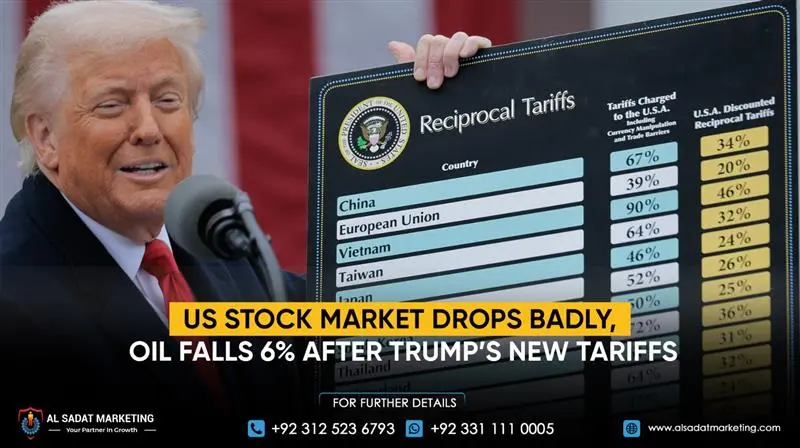April 4, 2025 – U.S. stock markets faced a historic rout on Thursday as investors reacted sharply to sweeping new trade tariffs imposed by President Donald Trump. The aggressive policy move triggered a domino effect across global financial markets, sending equities plunging, oil prices tumbling, and bond yields sharply lower.
The Dow Jones Industrial Average cratered by nearly 1,700 points, marking a 4% drop and one of the steepest point losses in the index’s history. Meanwhile, the Nasdaq Composite fell 6%, weighed down by heavy losses in technology stocks, and the S&P 500 shed almost 5% in a broad-based selloff. Small-cap stocks also suffered, with the Russell 2000 index dropping more than 6.4%.
Also Read: What Makes a Location Ideal for a Successful Business Investment?
Tech giants, long considered market stalwarts, led the retreat. Apple Inc. saw its shares plunge over 9%, as fears over supply chain disruptions mounted due to its dependency on China. Nvidia slid more than 7%, while the broader group of “Magnificent Seven” tech stocks lost a staggering $900 billion in market value in a single session.
At the heart of the market’s panic was the Trump administration’s announcement of a two-phase tariff plan, revealed late Wednesday. The strategy includes a blanket 10% tariff on all U.S. trading partners, with additional punitive rates aimed at countries labeled as “bad actors.” In total, tariffs now impact trade with 185 nations, pushing America’s average tariff rate to its highest level in over a century.
China, a focal point of the tariff escalation, saw its effective rate rise to 54%, intensifying fears of retaliatory actions and global supply chain disruptions.
The market reaction was swift and severe. The yield on the 10-year U.S. Treasury note dropped 14 basis points to 4.05%, the lowest level since October 2024, as investors rushed to the safety of government bonds. The U.S. dollar index also slid 1.5%, hitting a five-month low at 101.92.
Oil markets weren’t spared from the volatility. West Texas Intermediate (WTI) crude dropped further, nearing $66 per barrel, following a 6% decline in the previous session. The decline was driven by mounting fears of a global slowdown and a surprise output hike by OPEC+, with eight key members agreeing to ramp up production by 411,000 barrels per day—far surpassing forecasts.
Despite U.S. energy imports being exempt from the new tariffs, WTI is now on track to post a weekly loss of nearly 4%.
Global markets echoed the U.S. selloff. Europe’s Stoxx 600 index slipped 2.5%, while Japan’s Nikkei 225 declined 2.7%, dropping to levels not seen since August 2024.
President Trump has downplayed the market’s reaction, expressing confidence that the economy will ultimately “boom” under the new trade regime. However, investor sentiment appears far less optimistic as uncertainty grows over the long-term consequences of such broad tariff measures.
With volatility back in full force and key economic indicators flashing warning signs, all eyes now turn to the Federal Reserve and global policymakers for signals on how they plan to navigate the increasingly turbulent landscape.










